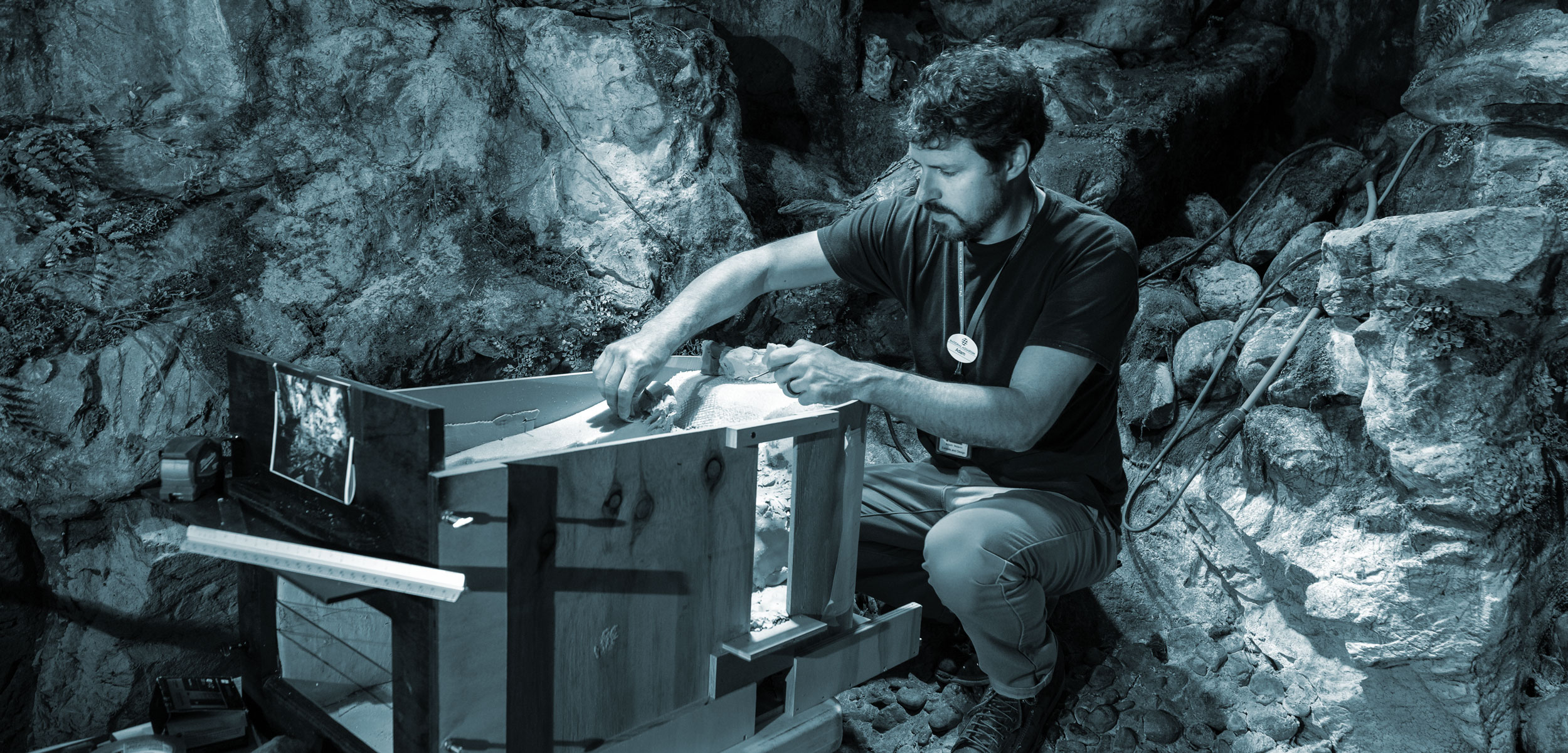Coastal Job: Exhibit Designer and an Octopus’s Toymaker
Adam Nelson’s work description includes making custom playthings for a prized octopus.
Article body copy
Some people work in cubicles, others work in kitchens, but the most intriguing workplace of all may be the coast. Meet the people who head to the ocean instead of the office in our Coastal Jobs series.
From the time he was in kindergarten, Adam Nelson knew he wanted to be an artist. With gallery showings in the Baltimore–Washington area, a teaching gig at an art institute, and a design company that makes medical device prototypes, Nelson is that and more. For the past 12 years, he’s worked at the National Aquarium in Baltimore, Maryland, where he serves as the lead designer and builder of the exhibits’ decor—from rocky outcrops to artificial corals and anemones.
Somewhere along the line, the art met with the ocean.
I create exhibits inspired by nature. The work involves a little chemistry, physics, engineering, and is informed by the fundamental skills I learned in art school: classic Greek sculpture, mold making, casting bronze. But here I’m using a contemporary set of materials that people didn’t have access to even 20 or 30 years ago.
Something I didn’t consider until I started doing this work was how much the light spectrum affects color underwater. If you want something to be a vibrant, candy-apple red six feet underwater, you really have to overpaint it in the shop until it’s almost garish: too loud, too red.
Everything our team builds could be in water for upwards of 20 years. So instead of using an acrylic paint from an art supply store, we reach for a more durable industrial epoxy paint. The veterinary team vets all of our supplies. And once cured, the materials we use become inert, meaning they won’t leach into the water column and harm the animals.
In a typical museum exhibit, the biggest issues are dust and light. Here, it’s about keeping animals and staff safe—making sure everything’s sturdy and stable and that no weird pockets exist for the animals to get stuck in.
That’s why a recent octopus exhibit was really challenging; the giant Pacific octopus is the biggest octopus you can find and yet they can squeeze themselves into tiny crevasses. They want to hide and be cryptic and ambush their prey. Our job was to display that behavior as well as we could for the public while keeping the animal safe. We integrated plumbing and jets behind the rockwork in key places around the window, knowing that the octopus likes to sit in strong currents. Once we put the octopus in, it actually stayed in those spots, which was pretty rewarding.
Ultimately, a smart, agile octopus wants something to do. So, a lot of octopus exhibits around the world include toys for the octopus, like a Mr. Potato Head. When designing our exhibit, we spent all this time doing research to create a realistic replica of a Pacific Northwest octopus den and it just seemed like, ugh, now we’re going to throw a Mr. Potato Head in there?
So instead we thought, what if we made replicas of a Dungeness crab and gave them unique puzzle systems, so that the octopus has to figure out how to open them to eat the food that’s been placed inside? We bought a crab at the grocery store, took it apart, molded it, and cast it in durable plastic. We painted and assembled several of the models and handed them off to the aquarist who slowly introduced them to the octopus.
We feared the octopus would bypass the puzzles and instead tear the fake crabs limb from limb. But they’ve held up okay. And the nice thing is that once the octopus eats the food inside, it discards the crab shells. They end up on the bottom of the exhibit, making it look even more realistic than if we’d added a Mr. Potato Head.

